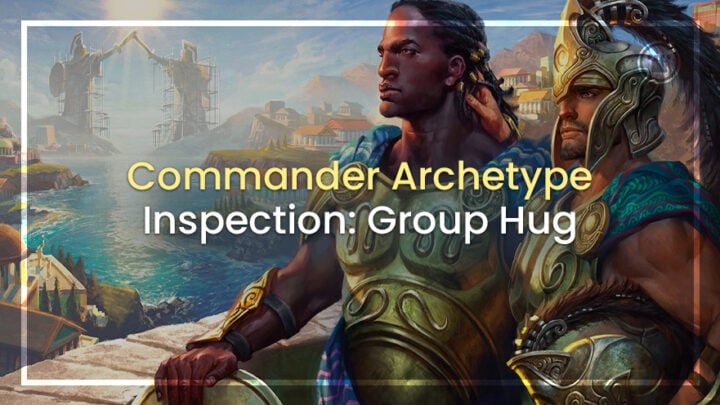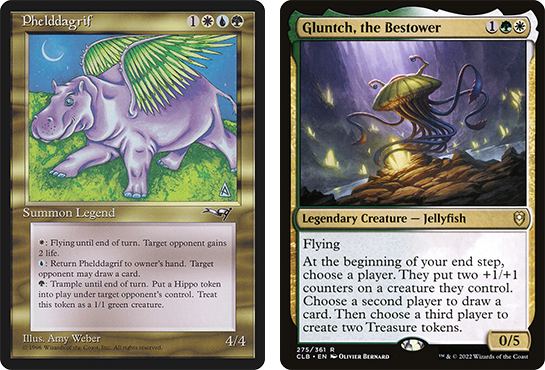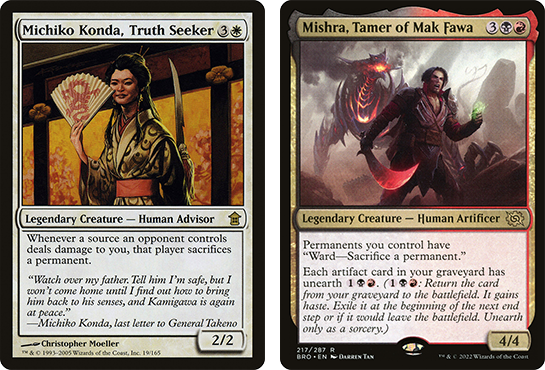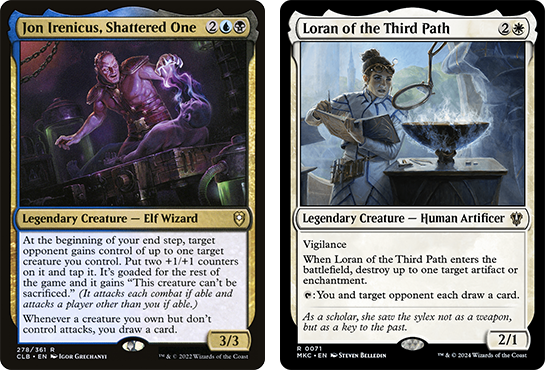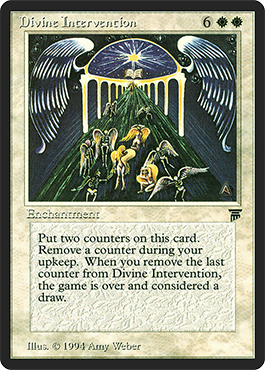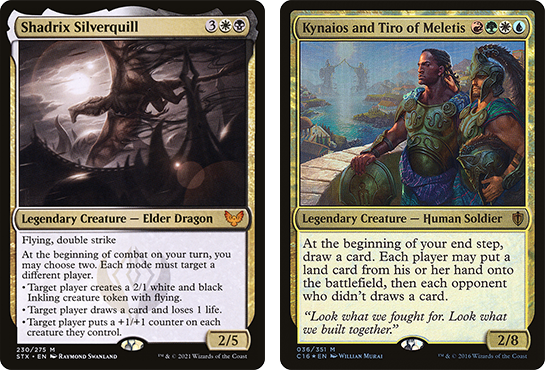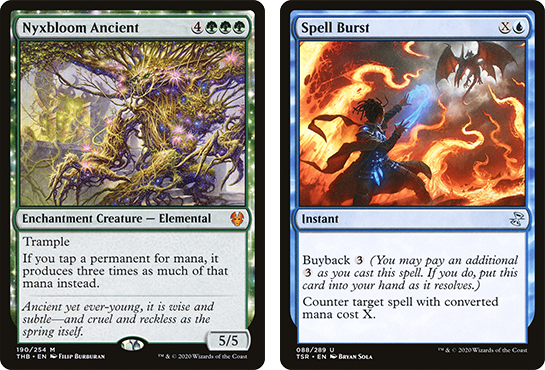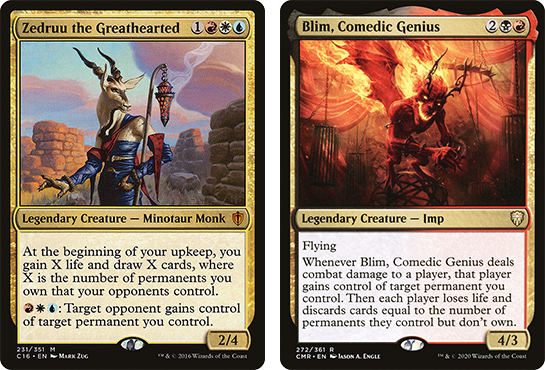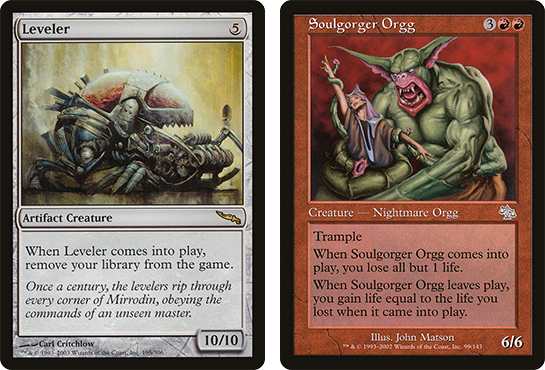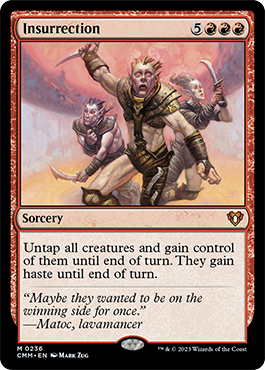Recently, I’ve used this blog to examine some of Commander’s most powerful and fearsome strategies. Building your deck around mechanics like treasure, cascade, or looting unlocks lines of play which are so good, they’re almost unfair. But isn’t that the natural conclusion of the multiplayer metagame? How do you win a fair fight when you effectively have to beat three opponents at once?
Players of Group Hug decks would answer that question with a few of their own: why are you already thinking of them as your opponents, and is beating all of them actually necessary?
There’s no one broken mechanic or universal synergy behind this archetype. In fact, Group Hug players are mostly focused on giving the other decks around the table the gifts of friendship, and abstaining from combat! So… how does that actually work?
PEACE, LOVE, AND POLITICAL MANEUVER
There is no single perfect definition of what makes a Group Hug deck, but the best rule of thumb is that they are decks which focus on helping other players – either specific individuals, or all players equally. Usually this help is in the form of additional resources: allowing them to draw extra cards, produce extra mana, gain life, or otherwise advance their game state for them.
For many players, Group Hug decks are synonymous with the Commander format itself. Not only has it been a recognised archetype since the earliest days of Elder Dragon Highlander, it’s one which really could not exist outside the specific context of multiplayer.
1v1 Magic is a zero-sum game which locks you into the brutal calculus of how to gain the most advantage over the other player at all times. Barring some truly historic misplay, you will need to find a way to defeat them in order to win. But in multiplayer your options and outcomes are no longer so reductive or cutthroat!
You could focus fully on defense, make yourself an unattractive target and wait for your opponents to wipe each other out.
You could hand out bonus resources as on-the-spot bribes to sway anyone who considers targeting your stuff.
You could also form a more permanent alliance with another player, and funnel them the tools they need to take out the opposition so you can duel it out for 1st and 2nd. Or you could just force a draw once you reach that point, if you’re truly committed to the path of non-violent resolution!
All the above are ways for Group Hug decks to reach the endgame of a multiplayer match without resorting to violence. That’s not even factoring in the rather radical idea that, in a no-stakes casual setting, someone might choose to prioritize cool plays or creating a close, exciting game over winning itself!
The “correct” amount one should care about winning in Commander is a philosophical debate worthy of its own article. But the idea that Group Hug players have effectively given up on victory is a misleading stereotype. Giving your opponents extra resources is just another tactical option Magic gives you, and you can construct win conditions to utilize it like any other.
THEY NEVER SUSPECT THE NICE ONES
Breaking it down logically, there are a few different ways to gain an advantage by spreading resources around in the classic Group Hug fashion.
The first is the obvious political benefit: in general, players will not make you their first target if you’re only helping them. If they do, it’s probably because they see you as helping a different opponent too much. But so long as you’re prepared to negotiate, and you keep some amount of defenses up, you should be fairly safe in the early and mid-game.
This gives a Group Hug player plenty of time to stockpile the resources they need for later – so long as they’re not too obviously threatening about it. One common approach is the “pillowfort” deck – one which assembles layer upon layer of defensive effects which, in combination, make it all but impossible for opponents to win. As opposed to a more typical prison deck, pillowfort cards won’t interfere with opponents directly, so it’s easy to misjudge the seriousness of the threat until suddenly interaction becomes impossible.
The potential for non-violent victory makes this a satisfying choice of win condition for Group Hug, but not the only one on offer. Inflating the resources available to all players significantly distorts the game balance of Magic. Like any other deck which alters the game to that degree, Group Hug players can try to tune their list to be better adapted to the new environment, playing a lot of mana sinks, resource doublers, and other high-investment, high reward type effects.
This is still a risky plan to commit to, since most Commander decks are already very good at utilizing the resources available to them. But once you start combining multiplicative mana effects and mana sinks like activated abilities or Buyback spells, anybody who isn’t already comboing off will struggle to keep up.
PLEASE, TAKE IT – I INSIST!
There are also more direct ways to defeat your opponents by giving them stuff. I’ve sort-of covered some of the specific interactions before, but the cards which matter most here are the ones you can make your Commander.
Actually transferring control of permanents is not a common effect in Magic, so having that ability always accessible is a high priority. The fact that most of these commanders also give you additional rewards for this “generosity” sets the tone for how such a Group Hug variant should be built.
Zedruu the Greathearted, Blim, Comedic Genius, Jon Irenicus, Shattered One, and Inniaz, the Gale Force are the main choices for a classic “hold my stuff” deck. Then there’s The Beamtown Bullies, who offer an explosive, combo-like variant of this strategy. It turns out that forcing opponents to resolve your ETB triggers can lead to some very fast and unpleasant kills.
If you’re not going to go straight for the jugular like that, then which cards you choose to give to opponents depends on what your commander incentivizes (and how mean you feel like being). You could give them genuinely useful things, double-sided effects which work the same regardless of who controls them, or any number of actively detrimental effects. There’s nothing more satisfying than squeezing the juicy benefits out of a card like Demonic Pact before yeeting it over to some other chump to stick them with the bill!
Expanding the approach of lethal gifting beyond permanents, you can also remind your opponents that they can have “too much of a good thing”. Septupling the mana produced by everyone’s lands seems very charitable, until Yurlok of Scorch Thrash shows up. Every Magic player loves drawing cards – but Forced Fruition combined with anti-combo effects like Deafening Silence and anti-hand punishers like Runeflare Trap can teach them the error of their ways.
There are also plenty of (especially white) cards which will directly or indirectly reward the Group Hug player for their gift-giving, from Wedding Ring to Smothering Tithe to Charismatic Conqueror. When you make it easy for everyone to play extra Magic, these sorts of triggers become even more powerful than they already were.
FOR THE LOVE OF THE GAME
Admittedly, all of this is a lot of extra effort and complication compared to just making a bunch of resources and comboing off. But committing to the Group Hug archetype requires an understanding that in multiplayer Magic, the first and most direct path to victory is not always the best one.
By reading the situation, not drawing attention to yourself, creating confusion in the game state and waiting for favorable conditions, you can use your resources and savvy to outmaneuver your opponents – defeating them in spite of (or even because of) the help you gave them up to that point.
No deck wins every game, and Group Hug will be less effective at tables where your opponents reject that style of deal-making altogether. But to see it as less serious a threat than any other archetype shows a flawed, closed-minded understanding of what Group Hug decks can be – as well as a lack of appreciation for the fun and spice they add to what is, ultimately, a shared storytelling experience masquerading as competition.

Tom’s fate was sealed in 7th grade when his friend lent him a pile of commons to play Magic. He quickly picked up Boros and Orzhov decks in Ravnica block and has remained a staunch white magician ever since. A fan of all Constructed formats, he enjoys studying the history of the tournament meta. He specializes in midrange decks, especially Death & Taxes and Martyr Proc. One day, he swears he will win an MCQ with Evershrike. Ask him how at @AWanderingBard, or watch him stream Magic at twitch.tv/TheWanderingBard.

